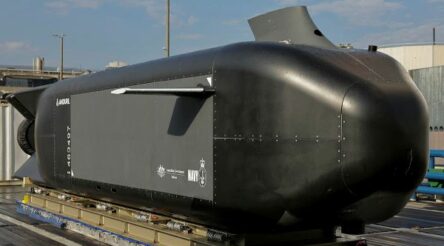National Space Qualification Network launched

A National Space Qualification Network (USQN), a new system of certification for satellites and other systems destined for space, has been launched with backing from the federal government.
The University of Wollongong (UOW), the Australian National University (ANU), Australian Nuclear Science and Technology Organisation (ANSTO), Steritech, Nova Systems and Saber Astronautics will contribute to a national network of facilities to test technology for use in space.
The NSQN received $2.5 million in funding through a federal Space Infrastructure Fund grant to establish the testing for space exploration missions, satellites and permanent space stations requiring advanced electronic instrumentation with the highest level of reliability.
The physically extreme environments in space travel mean most commercially available components are unsuitable.
Until now, those testing facilities haven’t been available in Australia, with local certification to be available after a rigorous series of tests.
UOW’s Centre for Medical Radiation Physics (CMRP), which has collaborations with NASA and the European Space Agency, will establish a facility to test electronic circuits and systems using lasers.
Associate Professor Marco Petasecca said: “The environment in space is so harsh.
“The gradient of temperature, for example, is extreme: it’s minus 270 degrees one moment and then suddenly, in close proximity to Earth, it may reach 250 degrees if exposed to sunlight. Commercial electronics are not designed to work in those conditions.”
Space craft launches also generate extreme conditions, such as vibrations and stress due to acoustics and accelerations up to 10 Gs.”
UOW will design and develop laser-based instrumentation to test electronic components ability to withstand a type of radiation damage known as a Single Event Effect (SEE).
In space, SEEs are caused most often by cosmic rays composed of high energy particles – protons, helium ions and electrons – and can play havoc with electronics, causing enough damage to jeopardise a mission.
“This SEE is accidental, it happens because of the interaction of a single particle with a functioning electronic system, but it can be catastrophic.
“Laser light can be used to assess the probability that an electronic system will fail during a mission, mimicking the effect a radiation particle would have.”
Also, in partnership with ANU, UOW will develop a professional course in space qualification testing to train and upskill a national pool of space testing experts in order to deliver accelerated growth in the space sector and associated industries.
Saber Astronautics’ role is to integrate qualification with their space mission control centre program, called the Responsive Space Operations Centre (RSOC).
The RSOC will link space weather and data infrastructure, supporting the new satellites that go to the test facility to find appropriate space environment profiles for qualification testing.
The RSOC, also a recipient of an Australian Space Agency’s Space Infrastructure Fund grant last year, went live in March and is preparing for a range of new flight customers in the USA and Australia.
Picture: Gilmour Space Technologies
Subscribe to our free @AuManufacturing newsletter here.
Topics Manufacturing News Technology
@aumanufacturing Sections
Analysis and Commentary Awards Defence Manufacturing News Podcast Technology Videos










